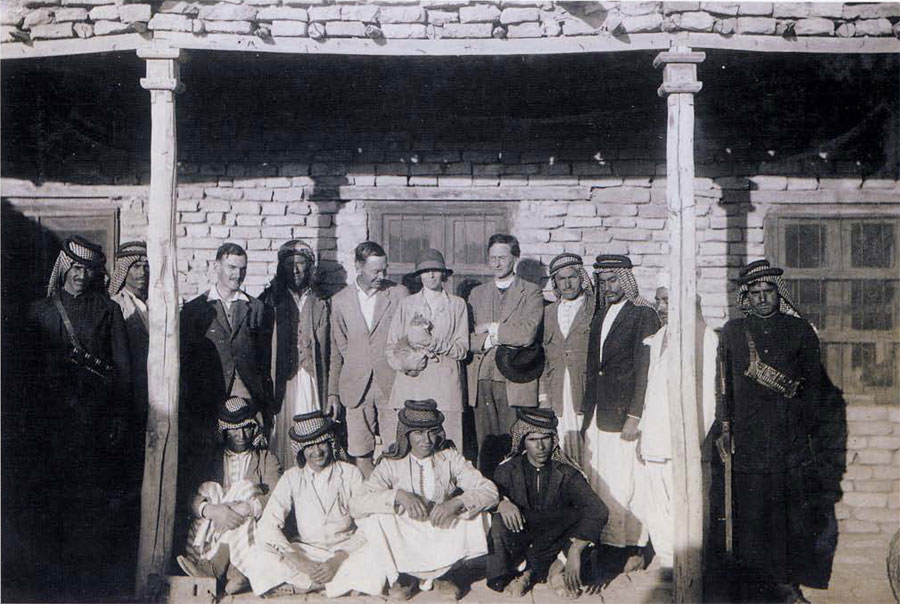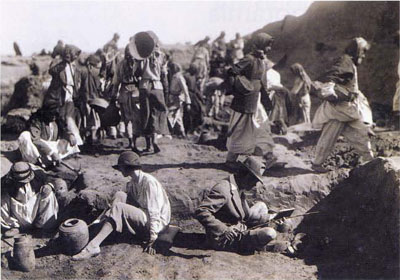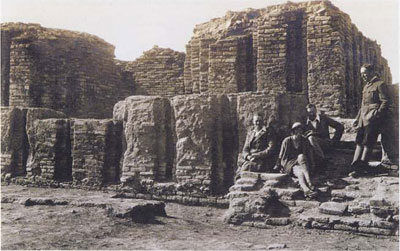
The Setting is an Archaeological expedition to Ur, in Iraq, during the 1930s. The beautiful, intriguing, and temperamental wife of the field director is found murdered. Archaeologists living and working close together at remote sites have been known on occasion to engage in passionate feuds. Such circumstances can be rife with ego clashes, amorous relationships, and consuming jealousies. But murder?
Ur of the Chaldees, as it was called in biblical times, is considered the home of Abraham, the Old Testament patriarch. It was also an important Sumerian city in southern Mesopotamia (present-day Iraq). In 1922, the University of Pennsylvania Museum and the British Museum chose Ur for a joint excavation program, which continued until 1934. Having previously worked for Penn in Nubia, from 1907 to 1911, C. Leonard Woolley was hired to direct the work in Iraq. Max Mallowan and Father Leon Ligroin, among others, assisted him. The spectacular results of this project made Woolley famous and greatly enhanced the reputations of the two museums. Woolley provided new interpretations of the rise of the Sumerians, the world’s first literate civilization. Even more sensational was his discovery of the Royal Tombs, dating to 2650-2550 B.C., and their contents — a wealth of objects made of gold, lapis lazuli, carnelian, and other semiprecious stones. These dazzling grave finds represent the highest artistic achievement of the Sumerians.


But what about Woolley’s wife? In reality, this story has a twist. Woolley’s assistant, Max Mallowan, was married to none other than the “Queen of Crime,” Agatha Christie. Christie first visited the excavation site of Ur in 1928. She met Mallowan there in 1930. Accompanying him regularly on his excavations, Christie assisted with many of the tasks when she wasn’t writing her mystery novels. It seems only natural, then, that she would select an archaeological project as the backdrop of one of her stories.
Christie published Murder in Mesopotamia in 1936. The novel recounts the murder of the field director’s wife on the “University of Pittstown Expedition to Iraq.” Just as the book’s setting mirrors the actual expedition, the mystery’s characters are only thinly veiled representations of its members. And Christie gave every one of them a motive for murder. In his book Mallowan’s Memoirs (New York: Dodd, Mead & Co., 1977), Mallowan recounts that the murdered woman’s character was based on Katherine Woolley, who was known to be a difficult, albeit fascinating individual.
“Here, perhaps, Agatha touched rather near the bone,” he writes, “and for once was apprehensive about what this dramatis persona might say. Fortunately, and perhaps not unexpectedly, Katherine did not recognize certain traits which might have been taken as applicable to herself, and took no umbrage to this book.”
The murder in Mesopotamia may have been fictional, and the popular book may have been just an interesting footnote to that excavation’s far-reaching success, but it is still gratifying to know that one of the University of Pennsylvania
Museum’s archaeological expeditions inspired a mystery by the famous Agatha Christie.
— Alex Pezzati, Archivist
